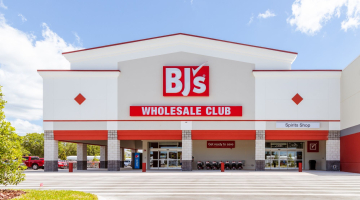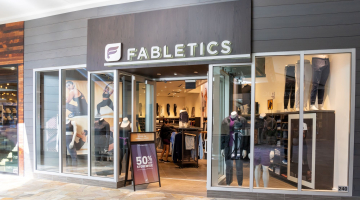
From left: Martine Reardon of NRF speaking with Vinod Bidarkoppa and Tim Simmons of Sam's Club at NRF Nexus 2023.
At Sam’s Club, the historical “3Cs” model of context, content and commerce has expanded right in line with the members-only warehouse club’s overall growth. There’s room for a fourth C – convenience – and it plays a key role in strategy, innovation and differentiation.
“Convenience is crucial to our strategy,” said Tim Simmons, senior vice president and chief product officer, Sam’s Club. “There are a number of reasons for that, but number one is that … we’re member-obsessed. We built that into our DNA and into our culture … . You can’t really be member-obsessed and allow all kinds of friction and negative experiences to persist. So, we’re on a journey to remove all that friction that we can, and that almost always translates into convenience.”
Simmons joined Vinod Bidarkoppa, senior vice president and chief technology officer, Sam’s Club, on stage at NRF Nexus 2023. The session was moderated by Martine Reardon, NRF’s CMO and executive vice president, content and retail strategy.
Miss us in Rancho Palos Verdes, Calif.? Check out the event recap and read the latest coverage on NRF Nexus 2023.
Sam’s Club — which recently announced not only record numbers of members but also revenues of $84 billion for fiscal year 2023 — has been somewhat of an innovation lab, even informing the bigger business of parent company Walmart Inc. The panelists spoke about initiatives like curbside pickup, delivery from club (including same-day) and, of course, Scan & Go shopping from the app. More recently, Scan & Go has expanded to café ordering, too.
But Simmons believes some of the company’s best work has been in convenience for associates. There’s an effort to eliminate mundane, routine tasks that can be solved through robotics, computer vision and artificial intelligence. With inventory exception management, for example, Simmons believes the company will be able to use technology to remove about 70% of those mundane tasks, “and give associates sort of a higher calling of being there for members and assisting members.” Both member and associate convenience are crucial, he said.
Bidarkoppa shared Simmons’ sentiments; he noted that convenience doesn’t come just by “wishing for it.” It must be built from the ground up.
His team builds what he calls “LEGO blocks” at the right level of granularity, so they can be strung in a fashion to orchestrate products and services that Sam’s Club members have come to expect. One example: At the beginning of COVID-19, he said, “We took the same LEGO blocks being used in Scan & Go, and within six days, put it on an iPad, so that now, the members could drive up to the club. Remember, none of this existed before.”
There are also camera-mounted floor scrubbers that provide scanning capabilities, capturing over 22 million images every day, with “a lot of great AI models on top of it.” They offer about 90% coverage of the club, with 95% accuracy, allowing exploration of price signs, low stock, no stock and other insights, delivered straight to employee handhelds to assist with decision making.
Read the latest articles and insights related to retail technology and learn how to get involved.
As for Scan & Go, it was developed about seven years ago by a “tiny little team that was focused on five-year-out innovation,” Simmons said. There’s still a version of that team today. It took a while to work out the kinks — and for members to be fully comfortable with it. “Over time, we just continued to emphasize to our members, ‘You can skip a lot of friction if you just want to do this yourself.’”
The company continues to explore how scanning can help in other ways, too. The app can ask a member if they’ve forgotten something, or allow them to pay with mixed tender. As for member acceptance, Bidarkoppa said Scan & Go penetration has increased by about 50% over the past couple of years.
The company will continue adapting its physical spaces to allow for the increases in omni-filled orders, curbside and other innovations. It will also continue listening to customers, and meeting — or exceeding — expectations. “We want to do more of what our members want us to do,” Bidarkoppa said.


